
Region: South Asia
Area Total: 3,287,240 km2Coast Line: Indian Ocean, Arabian Sea, Bay of Bengal
Capital: New Delhi

JHARKHAND
Capital : RANCHIArea :
74,677 sq kmLargest City : Jamshedpur
Population : 26,909,428Languages : Hindi, Bengali, Santhali, Mundari, Ho, Kharia, Bhumij and Kurmali, Oraon-Kurukh, Korwa, and Paharia (Malto), Magahi, Nagpuri,Sadri, Khortha, Angika & Oriya
Major Festivals : Holi, Diwali, Dushhera and Ramnavami, Barura Sharif, Belgada Mela Simaria, Bhadli Mela Itkhori, Chatra Mela, Kolhaiya Mela Chatra, Kolhua Mela Hunterganj, Kunda Mela Pratappur, Kundri Mela Chatra, Lawalong Mela, Rabda Sharif, Sangat and Tutilawa Mela Simaria etc.Areal view of Ranchi
Jharkhand is a state in eastern India. It was carved out of the southern part of Bihar on 15 November 2000. Jharkhand shares its border with the states of Bihar to the north, Uttar Pradesh and Chhattisgarh to the west, Orissa to the south, and West Bengal to the east. The industrial city of Ranchi is its capital while Jamshedpur is the largest city of the state. Some of the other major cities and industrial centres are Dhanbad, Bokaro, Sindri, Deoghar, Hazaribagh and Patratu.
Another View Ranchi
The Chota Nagpur Plateau forms most of the area of Jharkhand. The plateau is the source of many rivers including Damodar, Koel and Subarnarekha. This area is also famous for its abundant mineral wealth - iron, coal, uranium, graphite, and magnate are among the minerals found here. Jharkhand is a mineral state and accounts for 40% of mineral wealth of India. The region accounts for 35.5% of the country's known coal reserves, 90% of its cooking coal deposits, 40% of its copper, 22% of its iron ore, 90% of its mica and huge deposits of bauxite, quartz and ceramics.
Rock Garden, Ranchi
Tribal Dance
Jharkhand is one the most industrialized regions of the country today. Jamshedpur, Bokaro and Ranchi are centers of heavy industry based on these mineral resources. Jamshedpur is the Industrial Capital of the state. Bokaro is also well known for its Iron and Steel. The extremely mineral-rich state of Jharkhand has the potential to be the economic powerhouse of India in no time.
Jharkhand means "the Land of Forests", as such this state is immensely abundant in thick verdant forests, plateaus, low rolling hills, ample scenic beauty and diversity, rare herbs, wildlife sanctuaries, precious minerals, placid backwaters, mountainous limpid lakes and rivers, spectacular waterfalls, etc. Jharkhand has both bustling towns and quiet pastoral villages, surrounded by pacific forests, plateaus, hills, coal mines, and Iron and Steel industries. It is a rich land of great scenic beauty, placid backwaters, refreshing and rejuvenating greenery, alien and exotic cultures, and winsome rustic simplicity.
History
According to some writers like Gautam Kumar Bera, there was already a distinct geo-political, cultural entity called Jharkhand even before the period of Magadha Empire. Bera's book (page 33) also refers to the Hindu Mythological book Bhavishya Purana (around 1200 AD), where the reference of Jharkhand is found. The tribal rulers, some of whom continue to thrive till today were known as the Munda Rajas who basically had ownership rights to large farmlands. During the Mughal period, the Jharkhand area was known as Kukara.
BRITISH RULE
After the year 1765, it came under the control of the British Empire and became formally known under its present title, "Jharkhand" – the Land of "Jungles" (forests) and "Jharis" (bushes). Located on Chhota Nagpur Plateau and Santhal Parganas, the place has evergreen forests, rolling hills and rocky plateaus with many places of keen beauty like Lodh Falls.
The subjugation and colonization of Jharkhand region by the British East India Company resulted in spontaneous resistance from the local people. Almost one hundred years before India's First War of Independence (1857), adivasis(Tribals) of Jharkhand were already beginning what would become a series of repeated revolts against the British colonial rule:
Tribal Girl fetching water in Forest
The period of revolts of the Tribals to protect their Jharkhand land took place from 1771 to 1900 AD. The first ever revolt against the landlords and the British government was led by Tilka Manjhi, a valiant Santhal leader in Santal tribal belt in 1771. He wanted to liberate his people from the clutches of the unscrupulous landlords and restore the lands of their ancestors. The British government sent its troops and crushed the uprisings of Tilka Manjhi. Soon after in 1779, the Bhumij tribes rose in arms against the British rule in Manbhum, now in West Bengal. This was followed by the Chero tribes unrest in Palamau. They revolted against the British Rule in 1800 AD. Hardly seven years later in 1807, the Oraons in Barway murdered their big landlord of Srinagar west of Gumla. Soon the uprisings spread around Gumla. The tribal uprisings spread eastward to neighbouring Tamar areas of the Munda tribes. They too rose in revolt in 1811 and 1813. The Hos in Singhbhum were growing restless and came out in open revolt in 1820 and fought against the landlords and the British troops for two years. This is called the Larka Kol Risings 1820–1821. Then came the great Kol Risings of 1832. This was the first biggest tribal revolt that greatly upset the British administration in Jharkhand. It was caused by an attempt by the Zamindars to oust the tribal peasants from their hereditary possessions. The Santhal insurrection broke out in 1855 under the leadership of two brothers Sidhu and Kanhu. They fought bitterly against the British troops but finally they too were crashed down.
Then Birsa Munda revolt, broke out in 1895 and lasted till 1900. The revolt though mainly concentrated in the Munda belt of Khunti, Tamar, Sarwada and Bandgaon, pulled its supporters from Oraon belt of Lohardaga, Sisai and even Barway. It was the longest and the greatest tribal revolt in Jharkhand. It was also the last tribal revolt in Jharkhand. All of these uprisings were quelled by the British through massive deployment of troops across the region.
The 20th century Jharkhand movement may also be seen as moderate movement as compared to the bloody revolts of the 19th century. Having the Chhotanagpur Tenancy Act 1908 to protect their lands, the tribal leaders now turned to socio-economic development of the people. In 1914 Jatra Oraon started what is called the Tana Movement. Later this movement joined the Satyagrah Movement of Mahatma Gandhi in 1920 and stopped giving land tax to the Government. In 1915 the Chhotanagpur Unnati Samaj was started for the socio-economic development of the tribals. This organisation had also political objectives in mind. When the Simon Commission came to Patna in 1928, the Chhotanagpur Unnati Samaj sent its delegation and placed its demand for a separate Jharkhand State for self-rule by the tribals. The Simon Commission however did not accede to the demand for a separate Jharkhand State. Thereafter Theble Oraon organised Kishan Sabha in 1931. In 1935 the Chhotanagpur Unnati Samaj and the Kishan Sabha were merged with a view to acquire political power.
Jamshedpur City
GEOGRAPHY & CLIMATE
As stated abve, most of the state lies on the Chota Nagpur Plateau, which is the source of the Koel, Damodar, Brahmani, Kharkai, and Subarnarekha rivers, whose upper watersheds lie within Jharkhand. Much of the state is still covered by forest. Forest preserves support populations of tigers and Asian Elephants.
View from Angara District
Soil content of Jharkhand state mainly consist of soil formed from disintegration of rocks and stones, and soil composition is further divided into:
1. Red soil, found mostly in the Damodar valley, and Rajmahal area
2. Micacious soil (containing particles of mica), found in Koderma, Jhumeritilaiya, Barkagaon, and areas around theMandar hill
3. Sandy soil, generally found in Hazaribagh and Dhanbad
4. Black soil, found in Rajmahal area
5. Laterite soil, found in western part of Ranchi, Palamu, and parts of Santhal Parganas and Singhbhum
Economy
Jharkhand's gross state domestic product for 2004 is estimated at $14 billion at current prices. Born out of partition from old Bihar state in 2000, Jharkhand produces about 70% of the output of the old Bihar state. Since it is rich in minerals, the state per capita income is likely to increase in the coming years.
Jharkhand has a concentration of some of the country's highly industrialized cities such as Jamshedpur, Ranchi, Bokaro Steel City and Dhanbad. It also has several firsts in India, including:
- Largest fertilizer factory of its time in India (since shut down) at Sindri, Dhanbad
- First Iron & steel factory at Jamshedpur
- Largest Steel plant in Asia, Bokaro steel plant, Bokaro.
- Biggest explosives factory at Gomia, Bokaro.
- First methane gas well at Parbatpur, Bokaro.
Major industrial units
1. Bokaro Steel Plant, Bokaro.
2. Tata Steel Plant, Jamshedpur.
3. Tata Motors, Jamshedpur
4. Heavy Engineering Corporation, Ranchi.
5. Patratu Thermal Power Station, Ramgarh.
6. Chandrapura Thermal Power Station, Bokaro.
7. Bokaro Thermal Power Station.
8. Tenughat Thermal/Hydro Power Station, Bokaro.
9. Jindal Steel Plant, Patratu.
10. Electrosteel Plant, Bokaro.
11. Usha Martin, Ranchi.
Maithon Dam
Mega projects:
Jharkhand has several towns and innumerable villages with civic amenities. Urbanization ratio is 22.25% and the per capita annual income is US$ 1,490. Jharkhand also has immense mineral resources: minerals ranging from (ranking in the country within bracket) from iron ore (1st), coal (3rd), copper ore (1st), mica (1st), bauxite (3rd), Manganese,limestone, china clay, fire clay, graphite (8th), kainite (1st), chromite (2nd), asbestos (1st), thorium (3rd), sillimanite,uranium (Jaduguda mines, Narwa Pahar) (1st) and even gold (Rakha Mines) (6th) and silver and several other minerals. Large deposits of coal and iron ore support concentration of industry, in centers like Jamshedpur, Bokaro and Ranchi. Tata Steel, a S&P CNX 500 conglomerate has its corporate office in Jharkhand.
Coal Miners, Jharkhand
It reported a gross income of . 204,910 million for 2005.
Education:
The literacy rate in Jharkhand is 59.6% (2007). As per the 2001 census conducted by Government of India the official literacy rate for the state was 54.13% (Male: 69.74%; Female: 39.38%).
After formation of new state, Jharkhand Education Project Council (JEPC) has been implementing four projects for spread of elementary education namely DPEP, SSA, NPEGEL, KGBV. Hence works have been accomplished in the state towards achieving the goal of UEE but due to slow pace, the target of hundred percent enrolment and retention of children in schools is not yet attained.
Computer Education to Villagers
Jharkhand has made primary education so accessible that 95% of children of ages 6–11 are enrolled in school, as opposed to 56% in 1993–94, so this will likely to improve literacy a great deal. Some of the better known schools which operate chain of school nationally and regionally are Delhi Public School, Kendriya Vidyalaya, Chinmaya Public School,Loyola school, St.Xavier's, Shishu Mandir,Surendranath centenary School, etc. Students from Jharkhand have proved themselves on national as well as international level. Students from the state have always ranked well in almost all the national level competitive exams
A number of non-technical colleges are located in bigger cities and in small towns. Industrial Training Institutes (ITIs) offer popular three-year diploma courses.
Jamshedpur is home to one of the best business school in India, the Xavier Labour Relations Institute.A recent development, the Government of India has set up an Indian Institute of Management IIM at Ranchi under the mentorship of IIM Calcutta. The State Government has allocated land for the same near Birsa Agricultural University,Kanke and the session for its first batch with highest CAT CUT-OFF 99.65 Percentile,for any other IIMs including Ahmedabad and Calcutta has started from the 7th of July,2010 itself. Due to strategically favourable location (proximity to many industries) and a pool of competitive students IIM Ranchi is soon expected to break into the league of top notch IIMs.
Jharkhand has four universities: Ranchi University and Birsa Agricultural University at Ranchi, Sidhhu Kanhu University at Dumka and Vinoba Bhave University in Hazaribagh. Each of these has constituent and affiliated colleges located in other cities and towns, the best of which offer post-graduate and PhD programs.
Birla Institute of Technology (BIT), Mesra
Jharkhand has a number of engineering colleges: National Institute of Technology, Jamshedpur, Birla Institute of Technology, Ranchi, Birsa Institute of Technology Sindri, Dhanbad, Indian School of Mines University, Dhanbad, and theNational Institute of Foundry and Forge Technology (NIFFT). Among which BIT mesra, NIT Jamshedpur and ISM Dhanbad are among top 15 technical colleges in the country.
There are three medical colleges in Jharkhand namely M.G.M Medical College at Jamshedpur, Rajendra Institute of Medical Sciences (RIMS) at Ranchi and Patliputra Medical College And Hospital (PMCH) at Dhanbad.
Xavier Institute of Social Service (XISS) at Ranchi is also one of oldest B school well known for its Personnel management and Rural Development courses.
Foods:
Since the state is populated by people from all over India, food that is found in the state is varied. Native inhabitants have a cuisine in which spices are rarely used and rice is the staple. Natives prepare different dishes of rice like different types of Rotis, Pittha, Dhuska, Dudhauri, etc.
Local cuisine Matar Ghughni
Dhuska is a famous dish of Jharkhand cooked with mashed rice and pulses and served with either aaloo dum or mutton curry.
Tribals and Sadan use different types of flowers as vegetables, such as the flower of drum-stick, august and Jhirool. Use of Sag, i.e. leaves of different shrubs and other small plants, is perhaps another peculiarity of Jharkhandi food. Commonly used sags are Palak, Gendhari, Konar, methi, bhatua and chana.
Local alcoholic drinks include rice wine, originally known as Handiya, named after the vessel (earthen pot) used to make it. indeed hadndiya or rice wine is cultutally associated with native i.e. Tribals as well as Sadan as this drink consumed by both men and women, on social occasions like marriage and other festivals. Another common liquor is called Mahu, made from a fruit called "Mahua".
There are many foods that are a part of the traditional cuisine that are also known for their medicinal values, like Kurthi, which is used like a kind of pulses and is considered a cure for kidney stones. Fruits such as Jackfruit, Blackberry, Mango, and Litchi are found in abundance. Sattu is also major part of cuisine.
Wild Life, Flora & Fauna:

Cactus Flower
Jharkhand has a rich variety of flora and fauna. The National Parks and the Zoological Gardens located in the state of Jharkhand present a panorama of this variety.
Betla National Park in the Latehar district, located 8 km away from Barwadih, covers an area of about 250 square kilometers (96.5 sq mi). The national park has a large variety of wildlife, including tigers, elephants, bisons (which are locally known as gaurs), sambhars, wild boar, and pythons (up to 20 feet (6.1 m) long), spotted deers (chitals), rabbits and foxes. The mammalian fauna to be seen at Betla National Park also include langurs, rhesus monkeys, blue bulls andwild boars. The lesser mammals are the porcupines, hares, wild cats, honey badgers, Malabar giant squirrels,mongooses, wolves, antelopes etc. In 1974, the park was declared a Project Tiger Reserve.
Part of the reason for the variety and diversity of flora and fauna found in Jharkhand state may be accredited to the Palamau Tiger Reserves under the Project Tiger. This reserve is abode to hundreds of species of flora and fauna, as indicated within brackets: mammals (39), snakes (8), lizards (4), fish (6), insects (21), birds (170), seed bearing plants and trees (97), shrubs and herbs (46), climbers, parasites and semi-parasites (25), and grasses and bamboos (17).
The Hazaribag Wildlife Sanctuary, with scenic beauties, 135 km (84 mi) away from Ranchi, is set in an ecosystem very similar to Betla National Park of Palamu.
Patratu Valley
Jawaharlal Nehru Zoological Garden in Bokaro Steel City is the biggest Zoological Garden in Jharkhand. It has many animal and bird species, spread over 200 acres, including an artificial waterpark with boating facilities. Another zoo is also located about 16 km from Ranchi, and a number of mammalian fauna have been collected there for visitors.
Hundru Falls, Hazaribagh National Park
Dasam Falls
Jayanti Sarovar
Tagore Valley
Religions :
Hinduism is the majority religion in the state, with 68.5% of the population practising the faith. Islam is followed by 13.8% of the population and the Animisitic Sarna religion is practised by 13% of the population. Christianity with 4.1% of the population is the fourth largest religious community in Jharkhand. Jainism, Buddhism and Sikhism are all practiced making few less than 1%.
Temples:
Naulakua Temple
Baidyanath Temple
Mosques
Juma Mosque, Ramgarh
The Juma Mosque located at Chitarpur 16 km away from Ramgarh, this mosque is an excellent piece of Mughal art and architecture. It has the capacity to accommodate 5000 people to offer their holy namaz(pray). It is the biggest mosque of its kind in Jharkhand. It is believed that this mosque was built around 1670 on a land donated by the then king of Ramgarh. In its present form this mosque resembles the Jama Masjid of Delhi. From architectural point of view this mosque presents excellent engravings on its wall which is replete with calligraphy.
Churches :
church in Jharkhand
Sunset at Maithon Reservoir
Thanks & Regards, Raj. Kumar (Information & Images courtesy to various Websites)
www.keralites.net |
__._,_.___








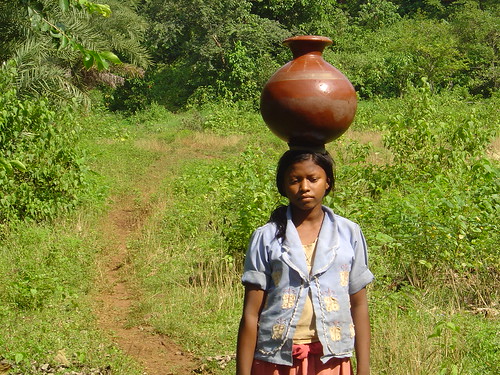






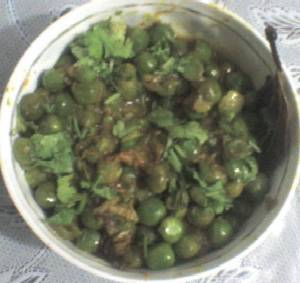

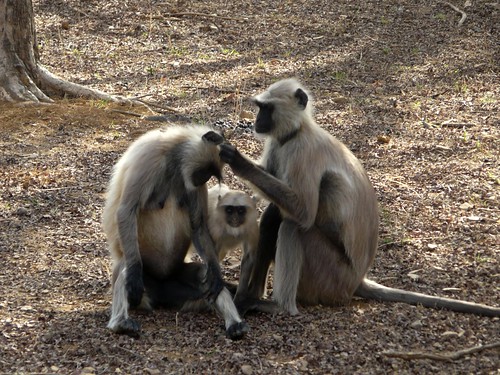
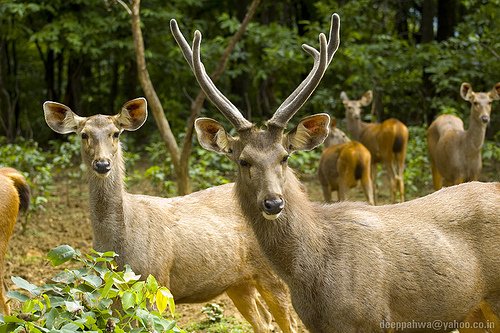



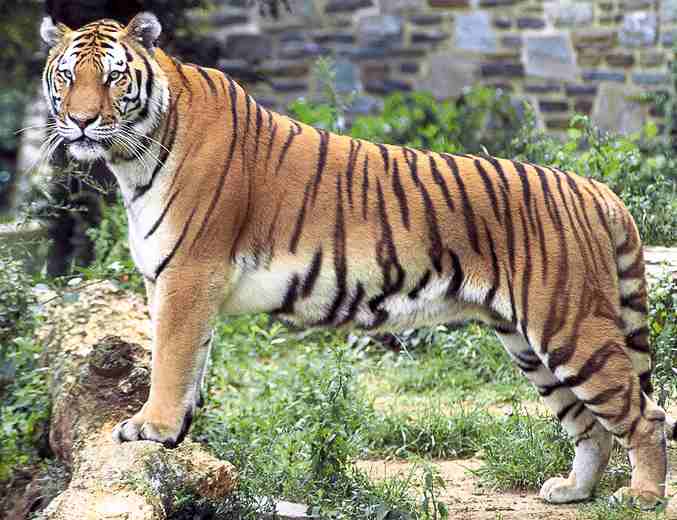







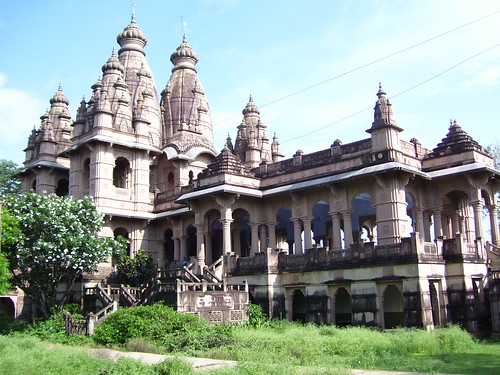

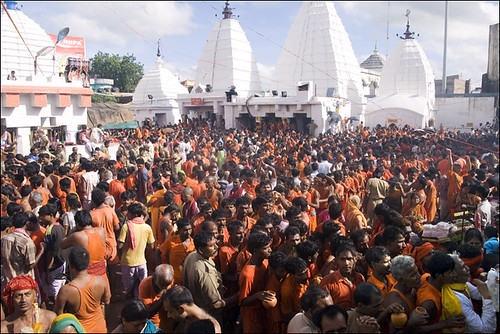







No comments:
Post a Comment